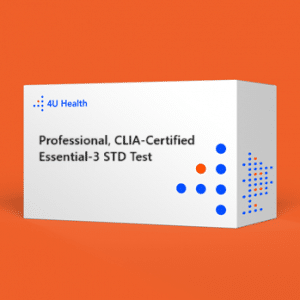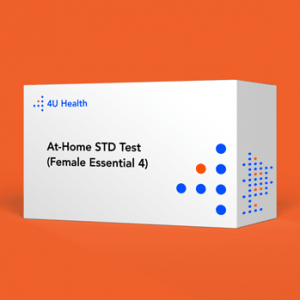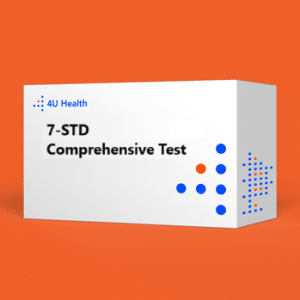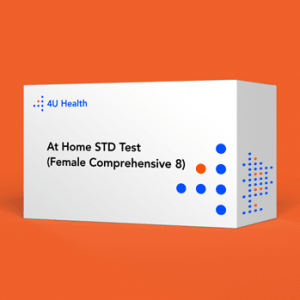
States with High STD Rates: Understanding the Landscape
The Centers for Disease Control and Prevention (CDC) reports a concerning 5% increase in gonorrhea cases and a staggering 32% rise in total syphilis cases nationwide in 2021, the most recent year for which data is available. In fact, more than 2.5 million cases of chlamydia, gonorrhea, and syphilis were reported in 2021 alone. As the nation grapples with this escalating epidemic, it becomes crucial to delve into the regional variations in infection rates.
States with the Highest STD Rates: A Comprehensive Breakdown
There is considerable variation in infection rates across different regions of the United States, as disclosed by a recent data breakdown conducted by US News & World Report. This analysis unveils the ten states grappling with the highest prevalence of sexually transmitted diseases. The compilation of this list involved a thorough examination of cumulative cases of chlamydia, gonorrhea, and syphilis per 100,000 residents. Unfortunately, the findings are particularly concerning for residents in the Southern states.
Highest STD Rates by State: Your Top 10
Notably, seven out of the top 10 states with the highest rates are located below the Mason-Dixon line.
10. North Carolina – 922.2 per 100,000
9. New Mexico – 925.9 per 100,000
8. Arkansas – 942.4 per 100,000
7. Georgia – 987.5 per 100,000
6. Alabama – 989.6 per 100,000
5. South Dakota – 1,009.1 per 100,000
4. South Carolina – 1,052 per 100,000
3. Alaska – 1,091.2 per 100,000
2. Louisiana – 1,159.9 per 100,000
1. Mississippi – 1,266 cases per 100,000 people
STD Capital of the United States
While Mississippi leads the pack among states for the highest STD rates, it’s worth examining the cities with the most significant STD prevalence. According to the CDC’s latest STD Surveillance Statistics, the following cities have the highest STD rates in the US.
10. Montgomery, AL
9. Augusta, GA
8. Little Rock, AR
7. Milwaukee, WI
6. New Orleans, LA
5. Philadelphia, PA
4. Baltimore, MD
3. Columbia, SC
2. Jackson, MS
1. Memphis, TN
Factors Contributing to STD Rates: Age, Sexual Orientation & Race
Apart from geographical factors, the CDC underscores various contributors to increased exposure to sexually transmitted diseases. Young people, specifically those aged 15 to 24, account for 51% of reported cases in 2021. Additionally, despite comprising less than 5% of the American population, gay men constitute 36% of primary and secondary syphilis cases.
According to CDC data on race and ethnicity, in 2021, Black individuals exhibited the highest rate of chlamydia infections at 1,081.9 cases per 100,000. Similarly, Black individuals reported the highest rate of gonorrhea cases in 2021, reaching 652.9 infections per 100,000 people. Additionally, American Indian and Alaska Native individuals had the highest rate of primary and secondary syphilis cases in 2021.
At-Home STD Testing: Taking Control of Your Sexual Health
In the face of the escalating STD epidemic in the United States, it is crucial for individuals to take proactive steps in managing their sexual health. At-home STD testing provides a convenient and confidential option, allowing you to prioritize your well-being. This modern approach not only brings peace of mind to individuals concerned about their sexual health but also plays a vital role in the broader community’s efforts to identify and prevent the transmission of sexually transmitted infections (STIs).
How At-Home STD Testing Works
At-home STD testing kits include all the necessary components for discreet and reliable testing. From sample collection to result interpretation, the process is designed to be user-friendly and efficient. The steps include:
1. Ordering Your Kit: Choose a reputable at-home STD testing provider and order your kit online. We recommend you use a service like, 4U Health, that offers the same tests as doctors and hospitals utilize.
2. Sample Collection: From the comfort and privacy of your home, follow the instructions provided to collect the required blood, urine, or swab sample.
3. Sending Samples to the Lab: Use the prepaid shipping materials to send your samples securely to the laboratory.
4. Accessing Results: Receive your digital results typically within a few days.
Benefits of At-Home STD Testing
Privacy and Confidentiality: At-home testing allows you to maintain privacy throughout the entire process, from ordering the kit to receiving results.
Convenience: Skip the clinic visits and long wait times. At-home testing offers the convenience of sample collection in the comfort of your own space.
Timely Detection: Early detection of STIs is crucial for effective treatment. At-home testing provides a quick and accessible way to stay on top of your sexual health.
Community Impact: By proactively managing your sexual health, you contribute to the broader effort to identify and prevent the spread of STIs within the community.
Empower Yourself, Protect Your Health
As we navigate the concerning surge in STD rates across the United States, it’s crucial to take proactive steps in safeguarding our well-being. Understanding the landscape of high STD rates in specific regions and acknowledging the alarming statistics of infections is a pivotal starting point. By shedding light on the top 10 states grappling with these challenges, we unveil the stark reality of the current situation.
Moreover, the significance of at-home STD testing cannot be overstated. Embracing this modern approach to healthcare not only prioritizes individual peace of mind but also contributes significantly to broader community efforts in identifying and curbing the spread of sexually transmitted infections (STIs). The convenience, privacy, and timely access to results offered by at-home testing empower individuals to take charge of their sexual health.
Let’s take a collective stand against the rising tide of STDs by staying informed, seeking appropriate testing, and advocating for comprehensive sexual health education and awareness. Together, we can strive for a healthier future, one where sexual health remains a priority for all.



